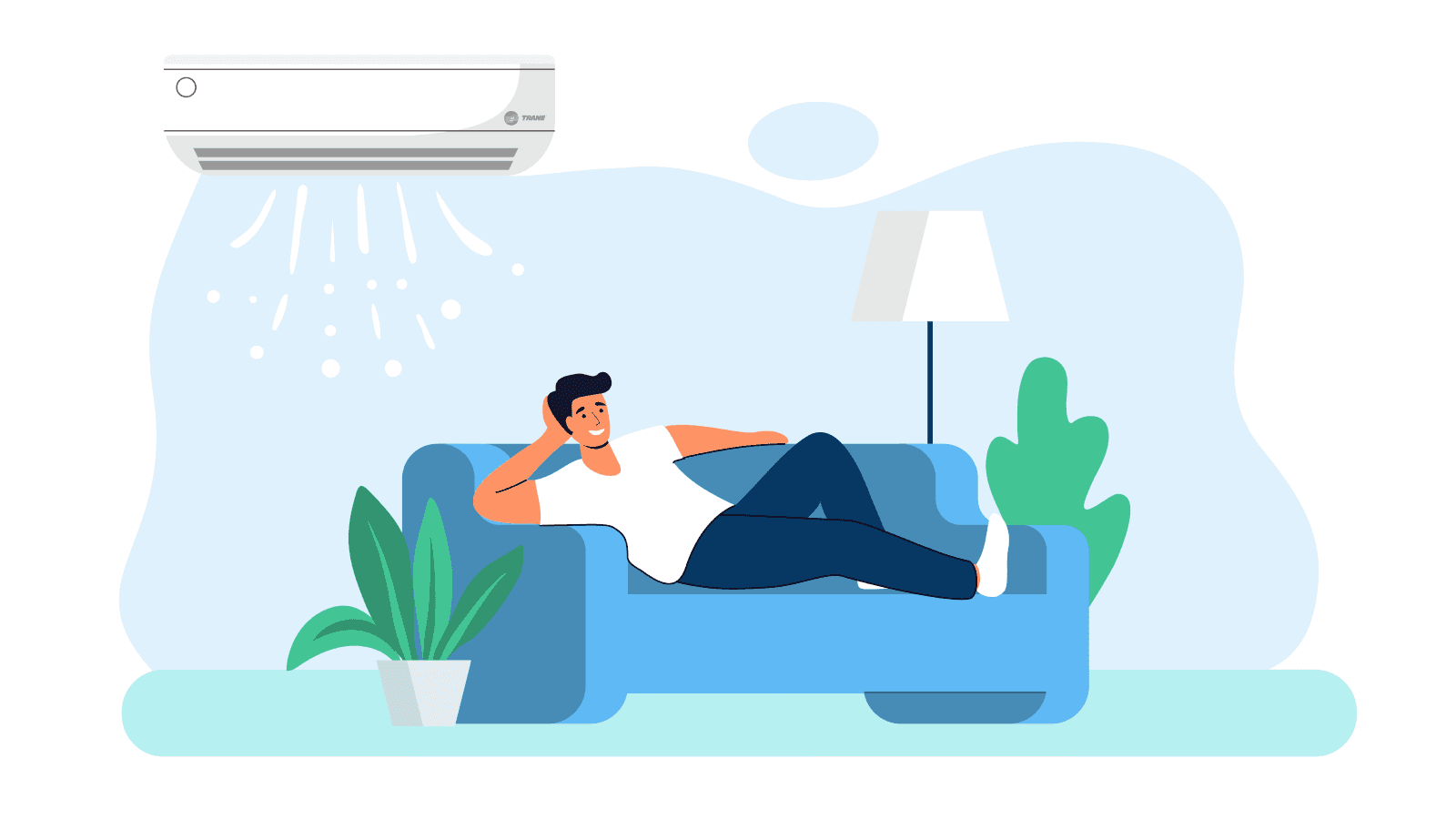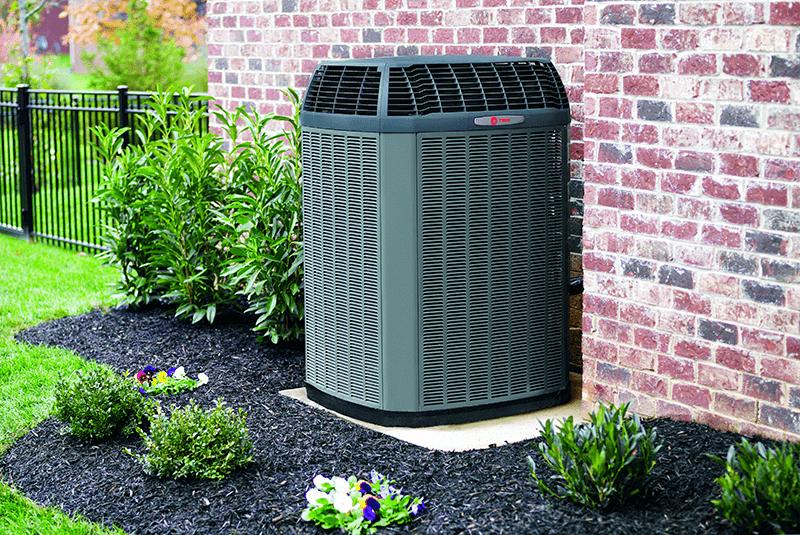Heating and Cooling an Addition to Your Home with Ductless Systems
Find the best way to heat and cool your new space.
Thinking about adding on to your home, but not sure about the best way to heat and cool your new space? A ductless HVAC system may be the most cost-effective installation option for your addition while also helping to reduce energy costs long-term.
Traditional HVAC, unless ductless HVAC, systems rely on a series of tubes that run throughout the home (known as ductwork) to move hot or cool air from the outdoor unit to indoor spaces. Most commonly, residential homes have a rigid form of ductwork that is comprised of sheet metal, but ducts can also be made of fiberboard or lined with fiberglass. Flexible ductwork is another option for homeowners, and these ducts are formed with a combination of metal wire coils and a pliable plastic coating. Matters like noise reduction ability, durability, level of mold resistance, ease of maintenance, and overall cost often determine the type of ductwork used.
Once ductwork has been installed in conjunction with a traditional HVAC system, it typically lasts for 10-15 years before problems arise. Despite this, regular maintenance and inspections are recommended. According to the Environmental Protection Agency, this should be done at the beginning of each heating or cooling season to protect homeowners against carbon monoxide poisoning. Cleaning of the ductwork should also be conducted on an as-needed basis. Beyond cleaning and maintenance, these ducts are rarely thought of.
When installing a new addition to a home, the absence of ductwork becomes a cause for concern. Many are left wondering how they will heat and cool the new space efficiently without these ducts. Because it is both costly and time-consuming to alter and expand existing ductwork within a home, most homeowners opt to avoid this route for an addition. Instead, they opt for a ductless AC or a ductless HVAC system that is simple to install and offers better energy efficiency.
What is a Ductless HVAC System?
A ductless HVAC, or mini-split, is a heating and air conditioning system that does not rely on a singular blower and traditional ductwork throughout an entire home to carry heat or cool air to separate areas. Instead, individual blowers are mounted to the interior walls of each room. These units are then connected individually to one outdoor condensing unit using refrigerant lines. This allows for more personalized temperature control in each living space and eliminates the need for expensive ductwork installation in older homes or areas like additions or sunrooms. For instance, a ductless AC may operate in one room while it is turned off in another.
How Ductless HVAC Systems Work
Ductless HVAC systems create a comfortable environment for separate indoor spaces where adding new ductwork might be impractical or expensive. This is particularly true if the existing ductwork and HVAC system are relatively new and will not need to be replaced for many years. These types of systems have two components — an outdoor unit and an indoor unit.
The outdoor unit used for a ductless mini-split system is similar to a traditional HVAC system. The crucial difference between the two is that an outdoor compressor connects to a single indoor unit with a traditional HVAC setup whereas it connects to multiple indoor units with a ductless HVAC system.
While traditional systems lean on the use of ductwork for air circulation, the ductless system connects to the outdoor unit using separate refrigerant lines for each indoor unit. This enables a process known as a thermodynamic cycle to occur. Essentially, heat can be moved throughout the system by compressing and expanding refrigerants. For heating, this heat is pumped from the outdoors to the indoors. For ductless AC, the heat is pushed from the indoors to the outdoors.
Because ductless mini-split systems only transfer heat instead of creating it as is done with a furnace, it is a much more energy-efficient option for heating and cooling an addition to a home.
5 Reasons to Invest in a Ductless HVAC System
- Save energy (and the planet!) – According to ENERGY STAR, the average home loses around 25 to 30 percent of the air that enters the ductwork. This is often due to leaks, poor connections, or holes. Ductwork for central air systems and heat pumps can also waste energy if they run through unheated or uncooled spaces, like attics or basements, on their way to your new addition. Since mini-split ductless HVAC systems avoid these ducts, they are more efficient and enable you to reduce your energy costs as well as your carbon footprint.
- Personalized comfort – Most ductless AC systems and heat pumps use wireless or wired controllers that let you easily operate your system, even if your indoor units are mounted on the ceiling or wall. This means that the temperature in each room can be adjusted to meet the personal preferences of occupants in each room. Whether you prefer to be warmer or cooler than others, Trane Ductless Systems enable you to take comfort to the next level with an "I Feel" function. This feature allows your controller to read the temperature from your exact location in the room and adjusts the heating and cooling for maximum comfort. No more hot spots or cold zones with a ductless HVAC!
- Embrace flexibility – A ductless system provides spot heating and cooling that operates separately from your central system, so your new addition– be it a master bedroom, office, or media room – can be as cool or warm as you like. You can also mix and match multiple indoor units to create a multi-zone system for customized comfort. Think you may continue to add to your new space later? Consider adding additional ports with installation to simplify future expansions.
- Improve indoor air quality – The ductwork that runs throughout an entire home is prone to dust, dirt, pollutants, and mold buildup. As a traditional HVAC system operates, these irritants may be released into the air indoors. For those with allergies or asthma, this is particularly problematic. By installing a ductless AC or HVAC system in a new home addition, you avoid this buildup. Likewise, ductless HVACs have multiple filtration levels, so you can quickly decrease the levels of allergens and irritants in a new space.
- Avoid costly ductwork installation - Even in homes where ductwork is already in place, an addition means that modifications must be made. Making changes to pre-existing ductwork is expensive and time-consuming and may prompt a costly upgrade to the entire HVAC system if overloading is a concern. Likewise, installing ductwork in a home where it doesn't already exist is even more of an investment in terms of both time and money.
Ductless HVAC systems are one of your best bets for custom temperature control in added-on rooms, especially when you want an energy-efficient option that will decrease energy costs and pollutants.
The Mini Split Ductless HVAC Installation Process
Unlike HVAC systems that require ductwork installation and a dedicated area to house the central unit, mini-split systems can be installed quickly with less space and more flexibility. After speaking with an authorized Trane dealer and determining which mini split unit is best for heating and cooling your new addition, the first step of the installation process typically involves mounting the indoor units.
These indoor ductless units come in various styles, including high wall units, concealed and cassette designs, and floor/ceiling and console units. You can choose your indoor unit based on style, space design, and desired features. Afterward, these indoor ductless AC or dual HVAC units are connected to the outdoor compressor with electrical wiring and refrigerant lines. This is done using a small hole in the wall, meaning the process is fast and non-invasive.
Afterward, the outdoor unit is installed on an exterior wall or a concrete pad. Once this step is completed, your HVAC technician will ensure the system works in multiple rooms. The entire process is fast, and a ductless heating or cooling system can be up and running in your addition within a few hours.
Connect With an Authorized Trane Dealer
If you’d like to learn more about ductless HVAC systems, contact your local Trane Comfort Specialist™ today. Our authorized Trane dealers will help you develop a heating and cooling plan for your addition that fits your home's layout and budget.




